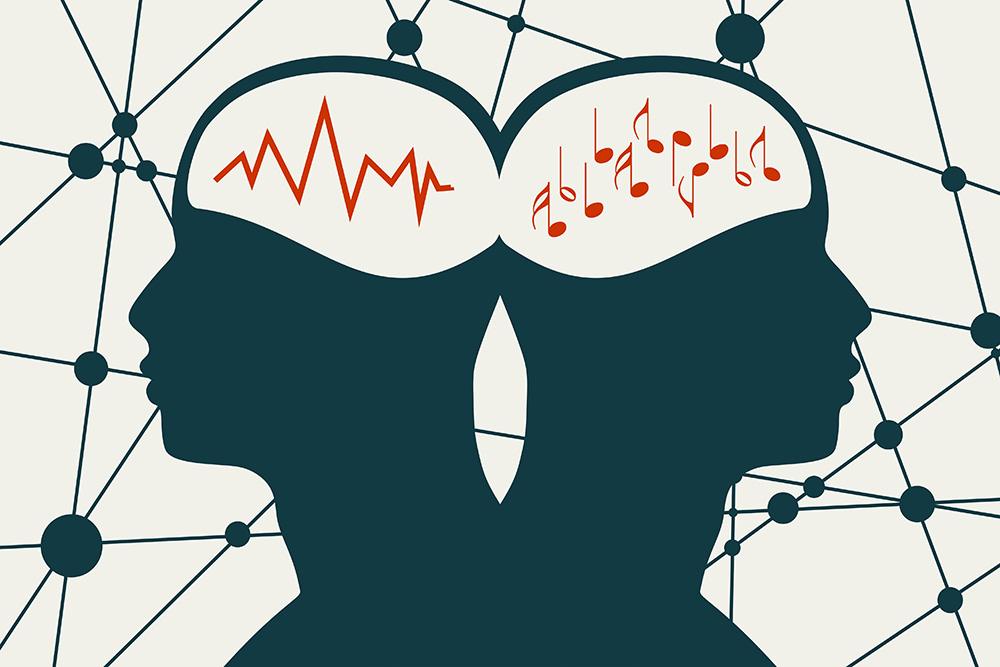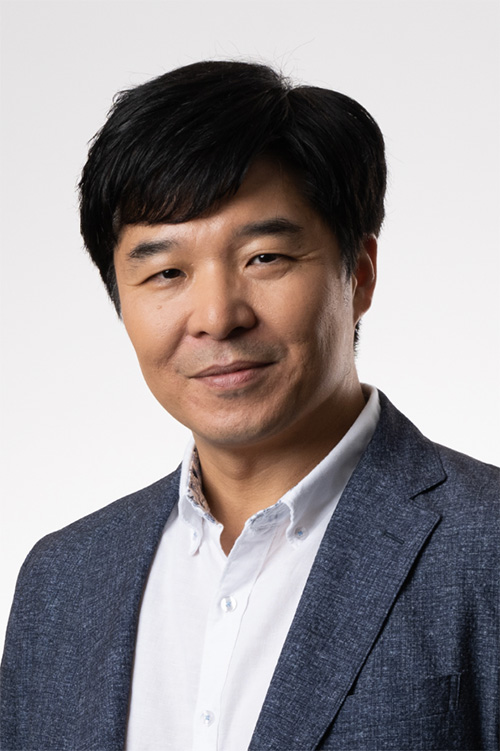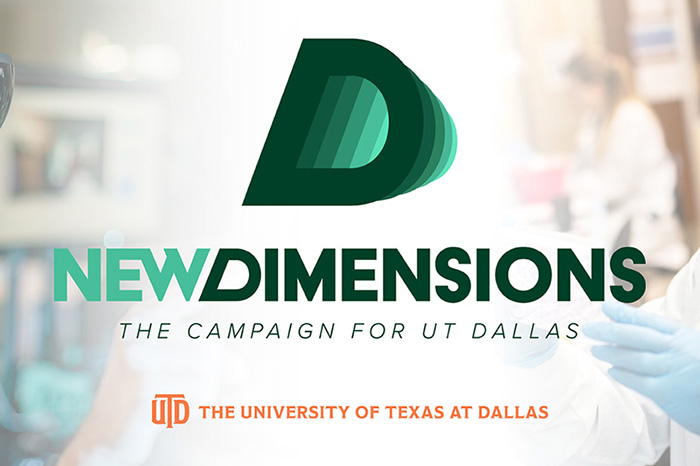Sound Science: Researcher Investigates How Music Alters the Mind
By: Stephen Fontenot | April 8, 2022

Dr. Yune S. Lee has seen the power of sound on the mind. While working as a composer of music for commercials, he was captivated by how the right tune can affect a listener’s mental state.
Lee traded his work in the music industry for an academic career in neuroscience, which led him to The University of Texas at Dallas, where today he researches how rhythm helps focus the brain’s abilities to process language.
With funding from private and public sources, including the National Institutes of Health (NIH), Lee hopes to find concrete neurological evidence for the beneficial effects that many people believe sound therapy can provide.

“I am fascinated with the power of music — it’s something I experience on a daily basis,” he said. “In my old job, I had to make or find music to add to TV commercials. When we use different types of music, we get completely different impressions and emotions accompanying the same visuals. When they are perfectly harmonized, you get goosebumps.”
Lee, assistant professor of speech, language, and hearing in the School of Behavioral and Brain Sciences, recently received $200,000 in funding through an Intellectual Property Assignment/Sponsored Research Agreement (IPA/SRA) to investigate noninvasive brain stimulation via sound to improve cognitive and sensory function.
He also has an active three-year, $411,000 grant from the National Institute on Deafness and Other Communication Disorders — a component of the NIH — to investigate the use of rhythm therapy to understand the neural mechanisms underlying aphasia, a language disorder leading to substantial difficulties in daily communication.
Lee, who holds an appointment at UT Dallas’ Callier Center for Communication Disorders, said his dream of combining his two passions, music and neuroscience, dates to his undergraduate days as a biology major at Yonsei University in Seoul, South Korea.
“Then, while in graduate school at Dartmouth College, I was deeply immersed in the joy of auditory neuroscience and functional neuroimaging,” he said. “As a postdoctoral research fellow at the University of Pennsylvania, I delved into translational neuroscience and had hands-on experience with neurological disorders including aphasia, where you see some fascinating phenomena. One striking example is that patients with non-fluent aphasia can sing even if they have great trouble speaking.”
“Combining these cutting-edge analytic techniques and neuroimaging methods, we aim to lay the groundwork on the impact of binaural beat on cognitive and language function.”
Dr. Yune S. Lee, assistant professor of speech, language, and hearing in the School of Behavioral and Brain Sciences
Binaural Beats
The IPA/SRA funding from South Korean company Digisonic supports research on the clinical effect of binaural beats, which are achieved when slightly different frequencies of sounds are played in the left and right ears.
“When you feed your brain two different frequencies, the brain gets confused. It tries to resolve this discrepancy and generate a new third frequency inside the head,” Lee said. “That offset frequency corresponds to the small mismatch of the two signals in hertz. That in turn is thought to oscillate the part of the brain that produces brain waves at that new frequency.”
Digisonic, a sound-based health care startup, hopes to develop an app based on the results of Lee’s study.
In his study, Lee will control the two frequencies played to the research subjects so that the offset frequency will be in the gamma band range, above 30 hertz. Gamma waves, one of five different frequencies of brain waves, are believed to be involved primarily in higher order cognitive functioning.
Lee will track effects using two types of brain imaging methods on young, healthy adults. The first, electroencephalography, will document the wave frequencies generated and identify the temporal characteristics of the brain activities that cohere with them.
“Our pilot data revealed that the bilateral prefrontal area of the brain increases in coherence after being primed by binaural beat compared to a control tone,” he said. “We’ll try to relate that activity to participants’ performance on cognitive tasks pertaining to complex language comprehension.”
Another neuroimaging method, functional MRI (fMRI), adds a unique component to the study. To identify brain regions, it will measure blood flow changes in response to binaural beats that give rise to enhanced cognitive functioning.
“Combining these cutting-edge analytic techniques and neuroimaging methods, we aim to lay the groundwork on the impact of binaural beat on cognitive and language function,” Lee said.
Novel Intervention
Lee’s NIH grant pursues a novel sound therapy for those diagnosed with aphasia. Melodic intonation therapy, which uses note and rhythm patterns to restore language, was developed nearly 50 years ago.
“Many people with aphasia can sing words that they otherwise cannot speak,” he said. “But the neural mechanisms behind this have been largely unexplored.”
Lee hypothesized that, counterintuitively, it may be the rhythm, not the melody, in singing that enables language recovery. He has been developing a rhythm video gaming therapy app in collaboration with California-based industry partner Flint Rehab, and recently completed an NIH Small Business Innovation Research feasibility project.
“Our participants are trained to use rhythm to their advantage in playing a video game to practice sets of phrases,” he said. “We’re going to use neuroimaging to track the changes in the brain via blood oxygen-level dependent fMRI in the next phase of the study.”

To learn more about how UT Dallas is enhancing lives through transformative research, explore New Dimensions: The Campaign for UT Dallas.
The connection between rhythm, cognition and sensorimotor activities has been documented in his recent articles published in the journals Developmental Psychology and Neuropsychologia. Children with a good sense of rhythm also tend to have good grammar skills irrespective of their IQ or memory skills. “Language and music are tied, at least in this way,” Lee said.
Lee said that demonstrated clinical benefits are necessary to bring the potential of sound therapy into focus.
“The idea of sound therapy has been around since ancient times. Everybody has some kind of experience using music for relaxation, for excitement or for focus,” Lee said. “We just haven’t had the tools to try to quantify the effects of music on the brain.”
The key to making a case for music therapy is finding results that are consistent from person to person.
“This field has been criticized because there’s no proven norm,” he said. “We want to put more clinical and statistical rigor to better understand the therapeutic efficacy of music.”
If Lee can document the neurobiological mechanisms underlying sound therapy, his work could help move techniques like binaural beat into a broader spotlight.
“Autonomous sensory meridian response — or ASMR — has become a big deal with no clinical proof behind its efficacy, which is concerning. But binaural beat has been on the horizon in neuroscience. It’s approaching the mainstream, and we begin to see studies in well-respected journals,” Lee said. “There’s a fair amount of evidence that it can improve your cognitive function or psychological state. We’re hoping to understand exactly how and why.”
What is an IPA/SRA?
The University of Texas at Dallas’ Intellectual Property Assignment/Sponsored Research Agreement (IPA/SRA) model provides an industry sponsor the opportunity to own the intellectual property (IP) that results from a sponsor-funded research project. Giving the sponsor ownership of the IP upfront eliminates much of the risk and uncertainty around license negotiations and the subsequent financial obligations.
Media Contact:
Stephen Fontenot, UT Dallas, 972-883-4405, stephen.fontenot@utdallas.edu, or the Office of Media Relations, UT Dallas, (972) 883-2155, newscenter@utdallas.edu.





